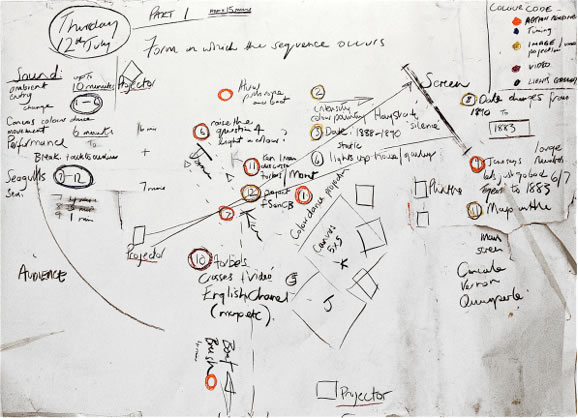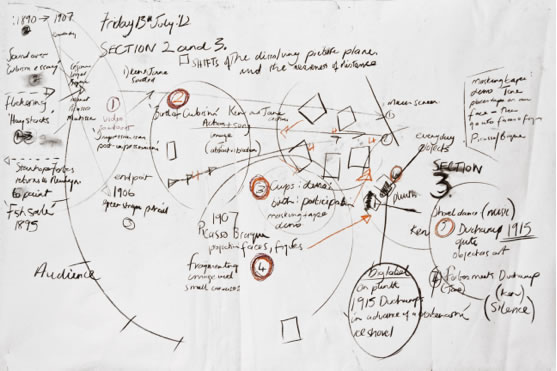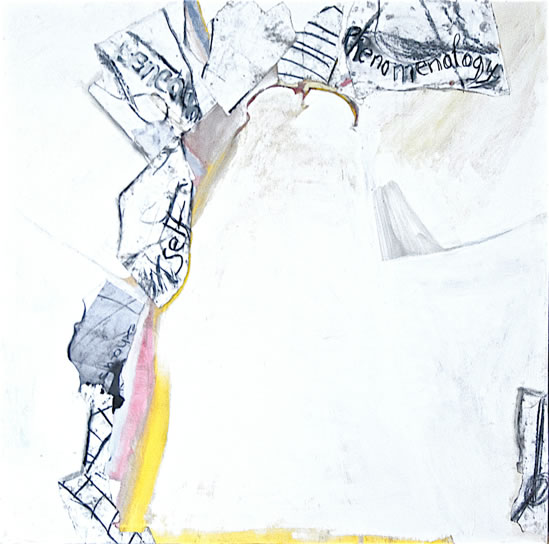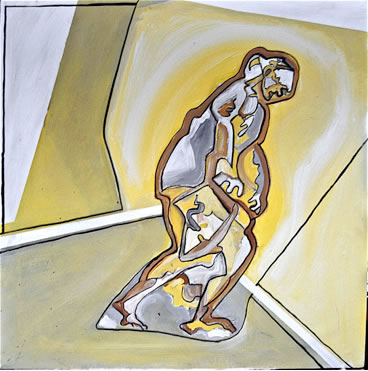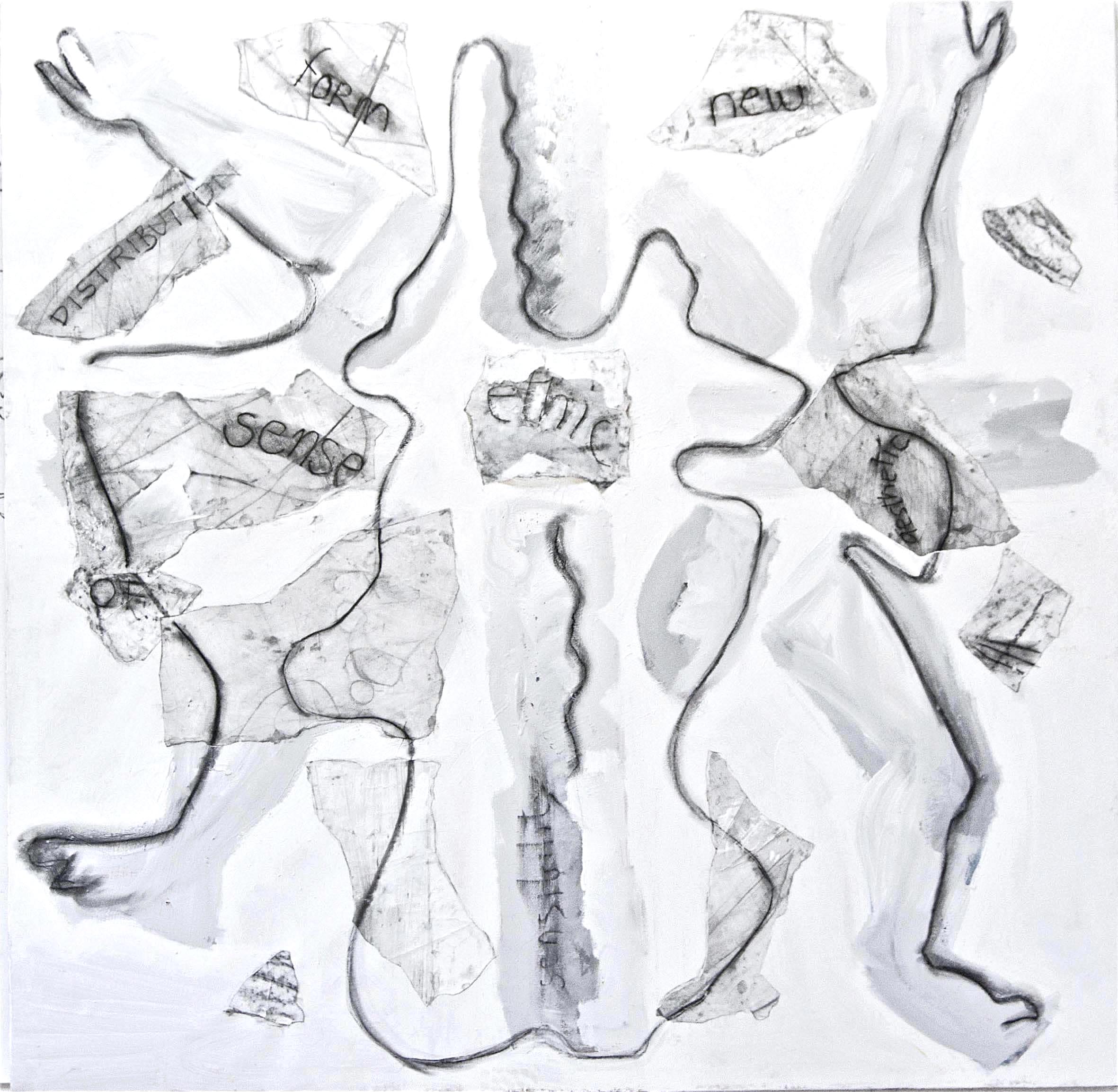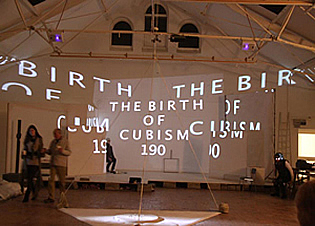The Object/s of Light in Perception
Directing and producing the commissioned studio to gallery event/s
Expanded and integrated discursive workshop/s
February 18th – 22nd 2013Jane Whitaker
[Funding bodies and support in kind, Arts Council of England, Lottery Funded, Newlyn Society of Artists for Plymouth Museum and City Art Gallery (Drakes Circus November 22nd 2012), Portland Drill Hall & Community Stone Work Space and Gallery (Easton Lane Portland, Dorset) February 18th – 22nd 2013/ 9th/10th April 2013. Further funding support, PSQT; Plymouth City Council, defra, European Agricultural Fund for Rural Development, Dorset County Council, chalk + cheese.]
Convening, screening documentation: Feedback within the participatory field, ethics and dissemination agreement/s, co-funding criteria.
“New Light on Newlyn” ‘Women in Art’ (from the permanent collection) on display until 2 November 2013 Plymouth Museum and City Art Gallery South Gallery, image backdrop for the performance 22nd November 2012 (JW)
Performance Art and Pedagogic space/s ©The Object/s of Light in Perception
The original intention of the work of Performance Art (as commissioned for the Plymouth Museum and City Art Gallery in 2011/12) (in response to the Newlyn Society of Artists collective show) followed on from an earlier initiative in 2007 as the foreword to the catalogue for the show confirms.
This initiative in the form of a previous NSA exhibition, entitled Lineage, celebrated a major refurbishment also, of the education room at the Newlyn Gallery Penzance.
The work of the imaginativeeye group in the SW region of the UK during this period enabled a practical focus to develop through the artists’ eye into the historicity of the performer and how the Eye Project/s team might contribute to an understanding of contemporary performance. This approach originally encompassed and promoted a reflexive form of research and importantly the documentation of this process in an online archive.
Past practice and the historical concerns of Performance as an active, inevitably subjective concern (from the artists perspective) were re-engaged in by the participants throughout the project of the imaginativeeye during its trajectory from 2000 to the present.
This archive now forms part of the British Library UK Web project initiative, (2010) for preservation of websites in e.g. the arts and humanities.
The earlier performance for the Newlyn Society of Artists 2007 exhibition and event at the Newlyn Gallery “Shifts in Perception” positioned the artists of the Newlyn School historically within this paradigm, and is video documented in the portfolio of the website. The performance of “Shifts in Perception” from 2007 and the active investigation of the historical period pertinent to the Newlyn School are accessible through this archive. This technique of investigation was transposed to the Newlyn School as it were within the time line of contemporary art generally.
The opportunity to consolidate this period of research investigation, and its future within the advancing technological development of the current period particularly regarding Live work was therefore a very welcome opportunity in 2011/12.
The given trajectory in the earlier decades of Performance Art history and Performance Art as a subject area in itself was a concern of predominant importance to both of us (as the key artists within the imaginativeeye project) and our differing yet shared concerns in terms of how our past practice was influential to future work. The dialogue created in this context is now documented in the imaginativeeye portfolio of the period.
The NSA in giving opportunity for performance spaces within their established exhibition programme and its connectivity to the Exchange Gallery of members work i.e. the 2007 exhibition ‘Lineage’ was therefore an important critical compass point.
Funding was received from ACE in 2007 for the imaginativeeye.
However the work presented at the time was quite unwieldy in that the paintings of the Newlyn School and the shifts in consciousness necessary to further understand and open up this period historically, through the exhibition (and the contribution of the performance) represented for all those concerned including the NSA committee an opportunity in 2012 to consolidate how this earlier exhibition might be reformulated and given a wider audience in the Plymouth Museum and City Art gallery, the museum having specific works from the Newlyn School in their collection.
The new Title ‘New Light on Newlyn’, and the offer that was extended to visit the archive of the PMCAG to view the paintings in the collection and respond to a work or works with a “new work” always encompassed the possibility at the outset for the inclusion of a Live work of performance as originally included in the Lineage event.
My own role in the collaboration with Ken Turner (through the imaginativeeye project) was therefore to continue to contribute to the development, evaluation and analysis of this form of research that deliberately focussed how “practice” in performance work and its activation and evidence of the historicic context importantly could be given provenance and expanded and deepened to reach out to both the existing locale, and to new audiences in the process. The aim being to deepen understanding of the artists’ past practice (in performance terms) and to create and innovate a form of evaluation of this process through the activation of new works.
The accepted funding application in this context, had at its core, an identified approach to the given ACE criteria (particularly regarding the activation of Performance Art, new and existing audiences within the Museum and Art Gallery as a civic space) but also in terms of how this activation would reflect on and give an appropriate airing to the project of the imaginativeeye, consolidating in this respect, both of the practitioners respective experience and more fully identifying their own specific contribution/s.
The development script process as documented on the website portfolio is therefore important to this work.This new project with its aim to consolidate the previous work in Shifts in Perception 2007 (in the same period of the Newlyn School of painting 1880-1940) and the linkage to the philosophic and conceptual developments of the period required a more rigorous coherence and consistency of approach to the core idea of the active components of the work.
That is to say in how Performance itself as a discipline could actively engage with its own arguable provenance, within painting and sculpture for example, and in doing so showcase the period of history (or further period in history for that matter) in question, creating within the form itself an opportunity for making a work of Performance Art, as a result. Questioning the role of the archive and also activating and creating an educative opportunity, enjoyable and accessible to all.
The workshop structure attached to the project created a specific focus through the performance and presented an opportunity for the gallery venues to encompass an engagement with participants that encouraged active reading and making processes. This was directed through the documentation of the event of the Performance Art work, understanding of the context in which this work had been generated and support and opportunity for members of the public to actively question and contribute discursively and practically to the event of the live work within the NSA exhibition in Plymouth City Centre and beyond.
The activation and environment of the civic gallery space was therefore very carefully considered by the artists before the event and during the preparation on site and following the successful delivery of the work.
A `”video trailer” and showing of the conceptually developed object, in context was on view during the first part of the NSA exhibition. However the inclusion in the NSA exhibition of the further video documentation of the performance immediately following the work in November to the end point of January 12th 2013 was decided upon by the gallery team exclusively (the artists suggestions of the usage of headphones and a summary outline regarding the documentation and its role within the work /stills images and descriptions were given indeterminate response by the PMCAG).
The workshop preparation also in this context appeared to be hampered by systems already in place regarding scheduling for the gallery spaces. This was disappointing given the original commission from the PMCAG had encompassed a trajectory (including studio visits to St Ives) from the beginning of the year, with encouragement given at all times for the fruition of the whole concept of the work. This was at all times inclusive of the potential for funding initiatives, which of course demanded awareness of the creative workshop reflective of the research and as detailed in the funding proposal as an integral part of this work.
The website portfolio is therefore an important component of the outcomes of the work regarding the joint venues detailed; further venues in development in the context of future funding initiatives, also for further and ongoing evaluation and development for performance idea already identified.
PSQT development of workshop and integrated performance February 18th – 22nd 2013 (JW)
Transcript: the convened discussion 9th April 2013 PSQT Drill Hall Gallery.
Brian is first to speak: recalling how he went about the task of filming.“I’m here to film what the activity is all about OK. When the stage is all set up, I’ll try and get that as part of the film, but it needs explaining because ninety-percent of the people that saw what Vanessa was aiming to do wouldn’t have a clue what it was all about! Kids playing marbles we can see what they’re about, what Vanessa was doing, didn’t. I’m not saying its wrong, but it needs explaining, exactly what the process is.”
Brian’s partner qualifies this opening statement:
“Why she was sitting in the corner?”Vanessa takes up the question and feedback to the participatory group.
“Well I tried to relate to the topic and understand a little about what you (the project) were about, if you like, and what you brought to us. Because as you remember, Jane, probably, I feel fortunate to have been invited and I’m interested. I’m going to try to respond to whatever it is and join in. I have an interest in art. I have some background. I’m also interested in words and concepts and so on. I’m aware of the different schools of thought and so on. I thought, “Well let’s see how I respond”. And it ended up responding to the stage situation. Of course I hadn’t seen all the video (the PSQT event) so I didn’t know what was to come. I’d only heard what. ……Well my contribution will be to represent an artist (not necessarily from any particular school) and so in my own space, I put myself in a circle on the stage, as an addendum to your theatrical performance. So I put myself up (on stage) and enclosed myself in a small circle. I tried not to get stepped on by Ken, (laughter) so my circle was smaller. And in that circle I put some things about myself because I do, do some artwork. I also put some things that I picked up during the week, for example quotes from the pieces that you gave us and a particular quote (from a letter to Goethe from Schiller 1795) I thought I would respond to, in my circle. So in my circle I had this quote and I had that as my focus as an artist.
……………..I had a compass there and I situated myself geographically as the subject, and then I thought to myself, and this thought came to me later, well I’m also an “object” and that’s the Title of the piece. So I’m an object like an artists’ model and that’s why I sat so still. But at the same time I’m here as a participant as an individual. So that’s why I sat in the circle with my bits and pieces, how I related to the week and how I related to everybody else really.
What I wanted to communicate with other people so before I went on stage I set my circle there so that people could actually go in to that that circle and if they wanted to they could ask me why I put those things there.”
Brian, “I know well you explained that to me beforehand but when the show was going on I bet there was ninety percent of the people wonder what it was all about.
You were sitting so still!”
Vanessa, “Exactly!”
Hannah, “The projections that were behind you they made sense that you were a apart of the piece, the paintings Matisse, and the figures were on your same scale you merged into that. Vanessa “I felt I understood enough at the end of the week.”
Shani’s guide / to Vanessa
“I first off when the show started, because I saw it as a show, (I didn’t take part in the workshops) had other interests, obviously, Shani was involved and of course as a parent I was hoping that she was getting the best out of the week. I was hoping her eyes so to speak, and her understanding of different types of art, which can be bad, would be involved. But for that I didn’t know what you were doing at the start, but by the end no-one had explained it to me, you had become part of the show.”Vanessa, “Good fantastic!”
Shani’s guide,” I thought it was a wonderful show I can’t quite believe that you would bring things like that to Portland. I don’t know how many people you expected (in the audience). I’m always disappointed with Portlander’s reactions. I’d love to have got so many more people there. We’re always appreciative”.
Shani, “Well, I never know what to expect when I come up here. That’s the truth and I come up here and I ask what next? But it’s always something new and it’s fascinating really, what goes on here (PSQT). I just was honoured to be included with you all you know you’re all amazing artists and performers and it was amazing to be included and have some part in it. I tried to relate it to my own work, somewhat, I suppose, and to what you were doing as well. But yeah it was a really good experience to be here and to see the work”.
Ken, “You were saying that you could relate some of the ideas to what you are doing in your college!”
Shani, “Yeah, it would be interesting to show people and see how they (people with visual impairment) would react to something like that because it is very visual and a lot of art is seen as a very visual concept. You go to art galleries and they say ‘Oh you can’t touch that!’ You can’t get near to this you know, and that to me is wrong. Art should be seen from all angles you know it should be visual, it should be tactile, and I think its something people need to open up to more. And you know you all opened up that really well during the week. You came here you didn’t know that there would be a blind person joining in but you all accepted it and made allowances.”
Ken, “I don’t think it was allowances, Shani, you know I think it was about exploring talents and possibilities.”
Shani, “Yes, you made alterations then to what you had intended to do, you altered it, and to do that in a short time…”
Ken, “Well you know it was amazing when you walked up on stage in front of the canvases, then behind with your hands sort of coming up over the canvases. And then of course the cup sequence was rather good…”
Hannah, “It felt like an exploration really, Shani the part when you were all working together and Mark talked to you and deduced the triangle and there were things happening at different levels. People communicating in different ways and then the responsibility was put onto Shani to come up with something and bring the performative value of the piece together, which the song did didn’t it/? Shani’s song brought cohesion.”
Anne, “Well I thought when I saw it on the night, and that was the first time that I’d seen it, that I’d not been to the workshop. I thought it was brilliant! I really thought it was brilliant. There were quite alot of things at first that I thought I didn’t understand. But then when I was editing the workshops (the weeks process and progress) it all came together. Because I was going through it slowly and I picking out the pictures and editing it and I understood it much more, because as an outside person, I thought the whole show was absolutely brilliant, what everybody did and everybody had there input. I thought it was excellent, really enjoyed it.”
Hannah, “Ok I think that you brought carving together with music and poetry and with drawing, Solomon’s drawing. Splashing and jumping. Ken I get the feeling that you want to create an art movement.”Ken, “Well you see I think we can’t achieve democracy without real knowledge. Now what is real knowledge?” Going beyond what we see in the everyday. And what the performance was about was that. Going beyond the representational in art, which is –the sunlight comes in, to light, which is on an object and the painter paints that object, just as it is. And it used to be in philosophic terms a mimetic understanding of the form of that object, as its revealed in your sight and light.
So the idea of light and representation is very important, if you look at that as an idea of knowledge. What is that? You see an apple on a plate and Cézanne sees it very differently. Why does he see it differently? Why? Picasso sees it differently, Braque sees it differently, and Matisse sees it differently. Why? Because they are searching for a reality beyond the object itself. If we see more then actually what is there, how does this affect, come back to life and affect life as well? So art asks the question, can the world as it is reveal much more, through visual perception? Sound perception? Phenomenology, the science of seeing?”
Hannah, “I think the purpose of art is to change a consciousness. Artist have to unlearn in order to learn again don’t they?”
Shani’s guide, “I draw what I see, shade it, I make things, I’m good at what I do I’m an aircraft engineer. So I’ve always been quite exact. I don’t know, is art like that?”
Shani, “I don’t know, art I think it’s the purest part of a person, it’s their spirit, it’s very pure it’s very true. You can’t lie with art. Art can’t be categorised.”
Shani’s guide, “I mean you can take an artist to Portland Bill but if you take a photographer, its much more accurate.”
Shani, “But that’s got nothing of the person in it. The art has what that person sees; it’s not what some electronic bit of equipment sees. Its what the person sees and how the person sees, that’s what’s important.”
Vanessa, “But can we set down what we see that faithfully?”
Shani’s guide, “Cézanne sees the apple on the plate and then he sets down what he sees, his eyesight is not what makes him see differently
Shani, “It’s the thought, the thinking.”
Shani’s guide “they see what to do with it.”
Shani, “It’s the persons’ character and how they felt at that particular time.”
Brian, “The artists are setting the standard of the day and you wouldn’t know that you had developed that idea if you didn’t have something to look back on!”
Shani’s guide, “Are there going to be distinct movements from now on do you think there has been Cubism there has been…”
Jane, “Well I think one of the objectives of our proposal to the Arts Council and the performance Art events was to acknowledge that there had been almost a circular, or cycle, (particularly with the experience that Ken has) and I’m not that far behind, in terms of the generation that we sprung from. And one of our suggestions to the Arts Council was that we would return to the origins of Performance Art, if you like in an attempt to open up to new audiences, that history.”
Anne, “Yeah when you sit down to edit a film I’ve no idea how it’s going to turn out. What impressed me about this project was from the workshop footage that Brian had made throughout the week, I could see how everybody had their input into that final performance and I could see where that was all coming from and I thought that was absolutely excellent. That’s what I gained from the edit. I started working on the workshops and I could see it all come together. I thought this really has to be shown to a much wider audience.”
Hannah, “But really your film edit began with Brian filming everyone’s expectations. People arrived who were working with glass and metal, the people that returned for the workshop were the people that were ready to give up their expectations and Anne interjects, “join in”. Part of it was that we were not sure where things were going Anne, “that’s right”. I think it was a very difficult ground to be in and in fact it didn’t’ need to be too big in terms of participants just big enough for that process to happen and to say these people that stayed with it (9 from an initial 15) managed to survive it and manifest something within it.”
Jane, “Your film Anne, from the Weymouth Cine and Film Club, does give a really good perspective on that. It was a large group for a workshop with which those participants had to remain for four days consecutively!”
Direction, script score and research.
Poem 1.
Seeing light
Touch the objectCast shadows reveals the darker tone
Cast shadows reveals the spectral quality
it is light that is divided
reveals the form.
The performance work was set up to consciously draw on the earlier work of collaboration particularly the method of active engagement and focus on “making”.
This approach was key to this early period of development. In fact it is the performance itself particularly the first performance of Object/s of Light in Perception that consolidated profoundly the earlier work.
Poem 2.
Mr Forbes cross’d to Cancale
searching for the subject in 1883,
finding life in the ordinary object, staged the picturesque in the coastal town of Quimperle.Monsieur Monet
lives the sequence,
overcasts the morning shift of memory.
Intensifies the thinking palette.The communication
that the retina
creates
in Brittany.The earlier and experimental showings, results of the collaborative focus created during the period of the imaginative eye workshop and performance events from the work of Shifts in Perception in 2007 are perceptibly important.
The approach to this commissioned work in January 2012 however was very different, in that a deliberate attempt to differentiate and confirm the collaboration was underway. It was also acknowledged by the artists that the technical considerations, particularly creating experimental and performed sequences from the rehearsal and pre rehearsal studio visit period would form an integral part of the projected video sequences of the actual performance.
Key elements as catalogued in the Bibliography were already in the artists own collection/s, the production of video sequences of the visual responses to the commission and the viewing of the Plymouth City collection were also key to defining the preparation periods of rehearsal.
Analysing the large format charcoal drawings/scripts or score produced is very feasible however the example given here simply articulates the results of this method as it was transposed to the integrated workshop situation. This was an invaluable part of the response and exchange with the participants and represents a key response to the funding criteria in that the creating of this score, or scenario for the workshop performance in February 2013, based as it was on the distinctive process of the research method, enabled participants to focus their own ideas through the performance work that had been established, (having viewed the documentation of the PMCAG event, responded to it and further focused their own ideas through it during the 5 days). This process enabled all concerned as well as the artists convening the workshop to understand more fully the identified components of uncertainty, crucial to the creative process.
The focal point of my own contribution to this environment was to hold the directive and continuity of this process from the preliminary stages in January 2012 through to the completion of the two performance works and the integrated workshops in February 2013.
Therefore the real complexity of this methodology it is now confirmed was clarified as the resultant production “timeline” was extrapolated that is midway during the final period of research preparation in the September of 2012.
During this period of 5 days of studio preparation all the evidences, video experimentation, that is visual elements constructed and performance activation for camera, blocking scripts of the historical frameworks, dialogue for the fictional sequences and the sound composition were prepared. Important to the direction and preparation of the performance, the sequences were initially ordered for transference to the Final Cut timeline through the creating of a power point presentation, which particularly focussed the interpretation of the fictional sequences drawn from the Cubism essay of Gleizes & Metzinger 1912. Sequential slides noting the exact time frame and order of all of these elements.
The Final Cut transfer production of sequences was a requirement of the performance from the outset as the research process had revealed an interesting ability to activate the image making as an event, both for the projected sequences of the eventual performance and as an integral part of the projection itself. This method arguably created new depth to the visual projection as an independent work. Extant now as a visual record that in its live activation takes up new meanings.
This is an important consideration and outcome of this performance as further investigation, development of specific elements are visualised and activated in new contexts perhaps for the work.
Appendices: Ethos and dissemination. Programme notes: referenced sources.
Bibliography and programme notes prepared for PMCAG upper (Attrill)
South Gallery Plymouth & PSQT Drill Hall PortlandReading clips given at the PSQT w/shp
Proforma/s for participants, during the workshop [participatory agreements for the 5 days]
Ethos and event Proforma ‘Documentation’
Programme notes.
The brush, as a vital part and parcel of the artists’ ability to create visual integration of thought and action, is the starting point for the first sequence. The brush stroke, is played out in a manner that pushes at both the metaphor of the brush, yet is a serious evocation and “reading” of the seminal essayists’ Gleizes and Metzinger’s collaborative document of the period. The embodiment of the ideas of one large group of painters leading through to 1913 and the development of Cubism is thus portrayed.The dialogue, or the original essay is performatively restored, as a dynamic vehicle in the discovery of the origins of “Cubism” through the Impressionist approach, and the techniques of the brush.
This visual journey is further integrated into a fictionalised sequence; Stanhope Forbes as the leading light of the Newlyn School joins the artists’ of the Impressionist school, specifically Claude Monet. The narrative thread picks up quickly, as we meet Stanhope Forbes following his crossing to Cancale in the coastal region of Brittany and the expedition to Quimperle, in pursuit of the picturesque subject and style.
Part two takes us through a sequence of perceptive steps advancing through the journey of the artist’s eye, mindful of the imaginative leap and interpretive quality of the projected image, as a moving canvas that catches light, and the component parts of the observation by the artist, of the subject and the object. That is within the subject, as a focal mechanism of Impressionism and the contrasting Newlyn style.
The mobility of movement in light and the focus on the ordinary “object” opened up in Part one thus forms the basis for the development pictorially and thoughtfully for the Cubist form, in its development.
To substantiate this development, through the artist’s eye and imagination, a brief demonstration interjects at the start of Part three of the performance. To accompany the historical realisation of the Cubist form, this is a playful approach for the audience to participate in a personal understanding of the developing consciousness of the period; leading to the complete rendering of the “object” of art as a conceptual subject through the brief, yet vital foray of DADA. The redolent decadent dynamism of the pre and post war avant-garde in European sensibility.
As we near the end of this Performance Art work as a perceptive insight, into the period, the lasting influence of the ‘object of perception’ and its origin in the everyday, the link to the schools of thought identified in parts 1 and 2 are consolidated. The focus shifts to the real object, purchased by Marcel Duchamp on his arrival or escape to New York, USA in 1915 – an ordinary Snow Shovel.
Bibliography, stills and text sourced for the Performance Art event (projections) and Live Art event.
Artists of the Newlyn School 1880-1900 Caroline Fox and Francis Greenacre catalogue produced with financial assistance from the ACGB, the Paul Mellon Centre for Studies in British Art and Smith, Klein and French Laboratories Ltd ©Newlyn Orion Galleries Ltd. 1979,79,81. ISBN 0 9506579 0 5
Text for Stanhope Forbes dialogue p., 73 – 79
PLATE/S A Fish Sale on a Cornish Beach Oil on Canvas 473/4 X 61ins Stanhope A Forbes/1885 Plymouth 1964 p., 77.Cubism Gleizes & Metzinger 1912 from Ten Unabridged Essays Modern Artists On Art edited by Robert L. Herbert ©1964 Prentice Hall, Inc Edgewood Cliffs New Jersey. Spectrum Books Library of Congress Catalog Card Number 64-7568
Text for the operation of thought and the optical imaging of light through colour, p., 3-4 p., 8, p., 13The Sources of Modern Art Jean Cassou, Emile Langui, Nikolaus Pevsner, 52 Colour Plates, 333 black and white plates, 51 line drawings. Thames and Hudson London 1962© Verlag DW Callwey, München 1961.
PLATE/S XV111 Bathers, Les Grandes Baigneuses Paul Cezanne 1900 – 1905
PLATE XX Jeune fille à la guitare Georges Braque 1913.
PLATE X1X les Demoiselles d’Avignon Pablo Picasso 1907.Seven Dada Manifestos and Lampisteries Tristan Tzara, illustrations by Francis Picabia, Calder Publications, Fifth impression 2003. ISBN 0 7145 3762 4
Text for the audience participation demonstration of Cubism p., 6 – 7The Essential Cubism Braque, Picasso & their Friends The Tate Gallery ©1983 The Tate Gallery/Douglas Cooper/Gary Tinterow Reprinted 1983 Tate Gallery Publications ISBN 0 905005 24 4
PLATE/S 111. Self-Portrait, Pablo Picasso 1907 Oil on canvas Národí Galerie Prague 1960 p., 232
PLATE/S 2. Standing Female Nude, Georges Braque painted between December 1907 and June 1908 Alex Maguy 1972 p., 38Marcel Duchamp first published under the Title: Sur Marcel Duchamp in a limited edition of 137 copies by the Trianon Press, Paris. First English edition 1959 Trianon Press 1959© Marcel Duchamp, Robert Lebel, George Heard Hamilton. Colour and monochrome plates printed under Duchamp’s supervision.
Text, Essay, Marcel Duchamp The Creative Act 1959 p., 77 – 78.
PLATES 51, 52 Nude Descending a Staircase, Marcel Duchamp 1912 – 1916
PLATE/S 83 In Advance of the Broken Arm (1915)Selected background reading: and PLATES further sources for the projected images.
Claude Monet: http://www.wikipaintings.org/en/claude-monet/boats-in-the-port-of-le-havre- chronological/retrieved 2012-09-6
1883 http://www.ibiblio.org/wm/paint/auth/monet/haystacks/ retrieved 2012 -07-10
Screen shots. Further sources 1872 Sunrise, temporal and atmospheric conditions 1890-91
http://www.moma.org/modernteachers/ref_pages/set_scene_pics/mai8_img2.html http://www.dada-companion.com/duchamp/readymades.php retrieved 2012-09-6 http://www.toutfait.com/unmaking_the_museum/Shovel.html retrieved 2012-09-6Fishing Boats Le Havre 1885 Claude Monet, Saint la Garde Station 1876/77 http://commons.wikimedia.org/wiki/Claude_Monet retrieved 2012-11-16
Photomontage Portrait No. 29 (Double Exposure: Full Face and Profile)
Victor Obsatz Gelatin silver print, 1953 Philadelphia Museum of Art, Pennsylvania; gift of Jacqueline, Paul, and Peter Matisse in memory of their mother Alexina Duchamp
© Victor Obsatz and Moeller Fine Art, New York–Berlin retrieved 2012-3-26
Further reading: workshop
Kandinsky Reminiscences from Ten Unabridged Essays Modern Artists On Art edited by Robert L. Herbert ©1964 Prentice Hall, Inc Edgewood Cliffs New Jersey. Spectrum Books Library of Congress Catalog Card Number 64-7568
Dada The Revolt of Art, Marc Dachy Thames and Hudson© 2005 ISBN -13 978-0-500-30119-7.
On the Aesthetic Education of Man, Aesthetics for a Social Purpose Friedrich Schiller Dover Publications, Inc New York 2004 first published in 1795
Aesthetics and its Discontents, Jacques Rancière, Polity Press 2009
Transfiguration of the Common Place Arthur. C. Danto Harvard University Press 1981Reading clips prepared for participants for the workshop reference/s Drill Hall & Community Stone Work Space February 18th – 22nd 2013
The Ready Made and the Tube of Paint, (page 179), Kant after Duchamp, Thierry de Duve© 1996.
On the Aesthetic Education of Man Nineteenth letter, (page 92), Friedrich Schiller to a Danish Prince (from a letter with Goethe in mind 1795).
The Primacy of Perception (introduction page 5), The Primacy of Perception, Maurice M. Ponty. ©Translation 1964.
Dada Manifesto 1918 Seven Dada Manifestos (page/s, 3 – 13), Tristan Tzara. ©Editions Jean-Jacques Pauvert Sept Manifestes Dada Lampisteries 1963.
Philosophy and Art, The Transfiguration of the Commonplace, (page/s 80 – 89) Arthur C. Danto ©1981.
Proforma ‘Aims and intentions of the workshop’: Monday 18th – Friday 22nd February 2013 (Performance work inclusive).
Ethos: and event.
We are suggesting that all participants read and agree the following:The workshop will be available to all those who want to investigate and explore the ideas presented in the performance work The Object/s of Light in Perception, performed at the Plymouth Museum and Art Gallery in November of 2012. This will form the basis for a series of exploratory exercises in small groups in response to and as presented by the artists overseeing the workshop, and for those who come forward and want to take part.
The artists intend with the participant’s permission to document the progress of the week from day to day as the various elements of the workshop are generated, discussed and developed within the groups or individually.
There will be an opportunity to contribute to the artist’s performance work (scheduled for Friday 22nd February at 7 pm) as an added event with an invitation to all friends and family etc
The participants are aware that photographic and video documentation may be prepared for an ebook publication, in which case the participants to the workshop will be notified in advance.
The workshop is supported by the Arts Council of England amongst other funding bodies identified, and seeks to support the artists’ initiative in the techniques of research investigation and practice for the above.
I have read and understood the above working ethos
signed……………………
Email address and contact address phone and mobile phone as required
…………………………….
Jane Whitaker, Ken Turner, imaginativeeye Eye Projects UK web archive for and in association with PSQT Learning Stone.
Proforma ‘Ethos and Event discussion forum documentation’ 9th April 2013 PSQT
The workshop conveners prepared the video material and a preliminary outline of the purpose of the meeting, which focussed the ideas for discussion. Soup and bread was also prepared to welcome the participants and guests and tea and coffee for the start of the meeting. The following clarifies and confirms the approach to the issue of documentation and the distinction that occurred in advance at the venues concerning the forms of documentation produced.Proforma: [given to participants attending the get together]
“Ethos: and event discussion forum”. Following up from the week of participatory work, the “research video” from the static camera will be presented. The idea is to raise debate about the event, the performance work itself and also the photographic images generated, duration of the video and quality and suggestions and feedback to the purpose, focus and placement of the material in the context of the project.
Also the video footage made during the week by Brian and the Weymouth film club and the material photographed by Anne and associates during the performance will be viewed. There will be discussion and suggestions regarding the finished film itself for PSQT archive and possibly the imaginativeeye website.
Further we would be very grateful if the following questions specifically could be addressed and suggestions made.
a) What is the immediate response to the suggestion of website access for the various video materials and in their completed and agreed formats from PSQT and Eye Projects UK web archive? Other viewpoints and portals?
…………………………………….
b) Are there any suggestions regarding the potential interaction between the two films, e.g. the “realtime” version of the performance event and the workshop process e.g. can or has a consensus be arrived at regarding the editing of this material or should it at all? Might the camera volunteer/s and editors take up and make what they think is a “good” response to the given deadline, which is e.g. May 31st the week of.
………………………………………………..
c) Is it possible to encompass a voice over narrative, preliminary introduction etc that acknowledges the sight impairment consideration within the project overall? e.g. a descriptive text might be written and or included as a separate project, a working group set up for this?
……………………………………………..
d) Might interviews with all the artists taking part be a good idea? How might this be delivered?
……………………………………………..
e) Can we enable a core group to ratify oversee the production and distribution of the films when finished? Is this necessary? This might just involve email contact and verification in which case updated emails are required or mobile, text, other forms of social media communication.
………………………………………..
f) Given time constraints any further suggestions?
……………………………………………….
Discursive Workshop PMCAG
Contact: website: Imaginativeeye and Eyeprojects - UK Web Archive
www.webarchive.org.uk
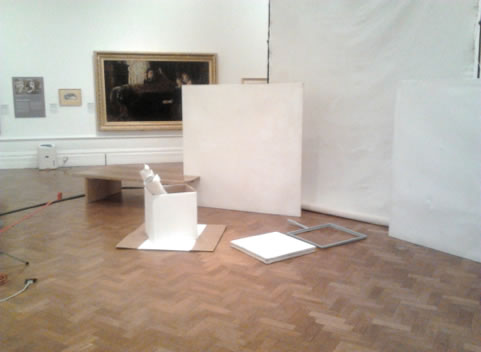
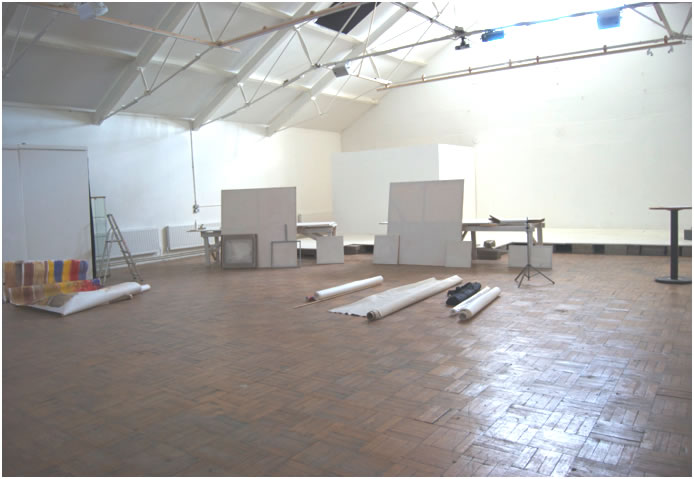
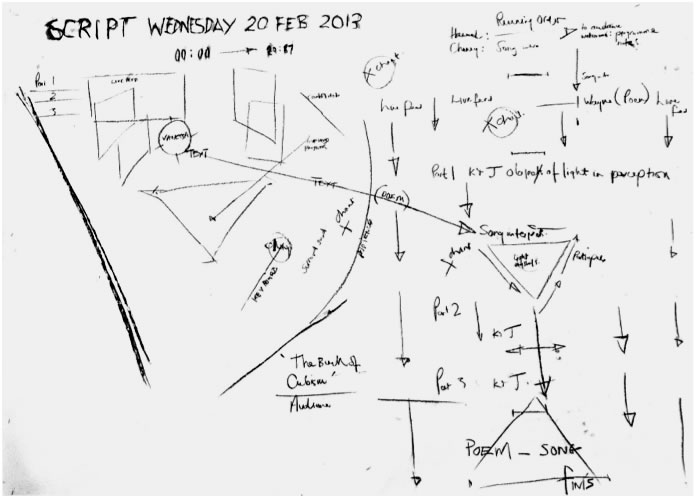



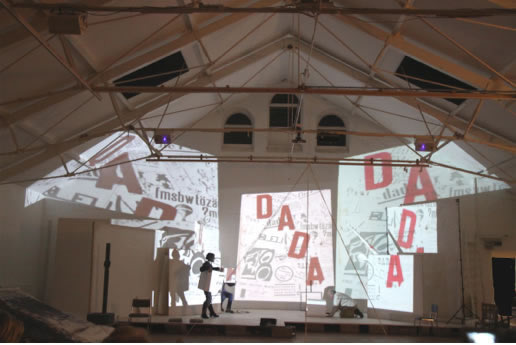
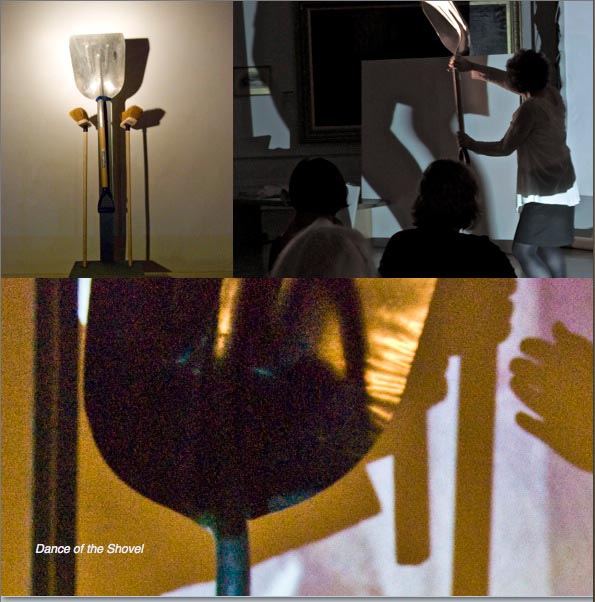
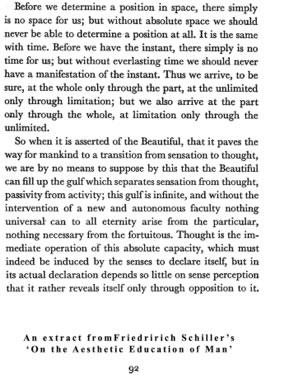
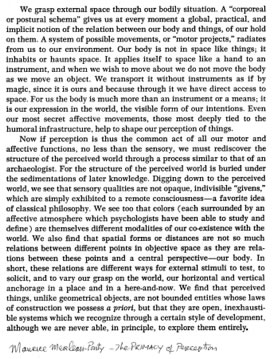

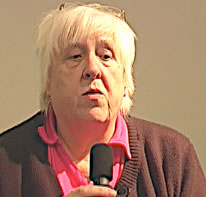 “ When I was editing everything came together. Everybody had their input and could see where it was all coming from.
“ When I was editing everything came together. Everybody had their input and could see where it was all coming from. “I wasn’t part of the workshop so nobody was able to explained things to me, however in watching it, in the end I understood and it was really good”
“I wasn’t part of the workshop so nobody was able to explained things to me, however in watching it, in the end I understood and it was really good”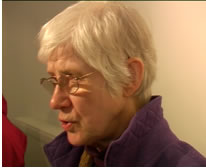 “I understood what you were about and I tried to relate to the topic, and felt fortunate to be invited. I was interested in the concept and looked to see what I could do. I responded to the stage situation where I became a sort of model during the whole performance”
“I understood what you were about and I tried to relate to the topic, and felt fortunate to be invited. I was interested in the concept and looked to see what I could do. I responded to the stage situation where I became a sort of model during the whole performance” 